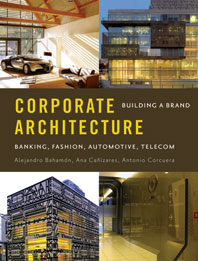For the new campus of a business school in Vienna, six international architects design a series of innovative buildings.
| Photo © Iwan Baan |
| Angled at 35 degrees, Zaha Hadid’s 300,000-square-foot library and Learning Center asserts itself on the central square. |
The challenge was daunting: plan, design, and build an entirely new campus for the Vienna University of Economics and Business in just five years. With 25,000 students, the school had outgrown its 30-year-old home in the city’s Ninth District and decided to move to a site in the Second District between Prater park and the sprawling new Messe Exhibition Center designed by Austrian architect Gustav Peichl.
The design process started in May 2008 with Vienna-based BUSarchitektur and Vasko + Partner Ingenieure winning the competition to master-plan the 22-acre site and oversee work on the 1 million square feet of facilities on six plots. To express the university’s progressive mission of integrating academia and business, the school selected forward-looking architects for those six projects: BUS would design the Lecture Room Center, Zaha Hadid the Learning Center with the university’s main library, Atelier Hitoshi Abe the Student Center, Peter Cook’s CRAB studio the administration building, NO.MAD from Madrid the Executive Academy, and Estudio Carme Pinós a departmental building. Construction on the site began at the end of 2009, and all the buildings opened in September 2013 at a cost of $667 million.
“The opportunity here was to create a university as a city,” says BUS principal Laura Spinadel. To set an urban tone, Spinadel and her team laid out a main street running diagonally through the nearly 2,000-foot-long site and added a network of paths and plazas between the buildings. The planners also established links to the Messe, so students would have access to the real world of business. And a pair of metro stations—one at each end of the campus—connect the school to mass transit and the rest of the city. Inspired by Vienna’s tradition of coffeehouses, many of the buildings have cafés on their ground floor with outdoor seating. “We wanted to create a lot of public places at different scales,” says Spinadel. “Face-to-face communication is important, not just texting or e-mailing.” At the center of the campus, BUS placed the main library—which stays open 24 hours a day, every day—to serve as the heart of the school.
Since an ecological ethos informs much business in Europe today, the university employs a number of sustainable-design strategies—limiting cars to the periphery of campus, using geothermal energy for 70 percent of its heating and cooling, equipping buildings with daylight- and occupancy-sensing lighting-control systems, and capturing rainwater from roofs for irrigation. Porous paving materials reduce water runoff, while most roofs are planted, and some have solar panels to generate supplemental energy.
BUS set guidelines for the buildings but didn’t dictate an aesthetic. “It’s important to have diversity in the architecture,” states Spinadel. As a result, BUS’s rusting-steel Lecture Room Center strikes a different visual chord from the warped forms of Hadid’s sleek Learning Center. The wiggling black-and-white pieces of Abe’s Student Center contrast with the colored blocks of CRAB studio’s administration building. And the houndstoothlike fenestration on Pinós’s building plays off the stacked boxes of NO.MAD’s Executive Academy. Is this a true academic village or just an architectural zoo? It’s too early to tell. But with this bold move, the school uses design to expose students to a diversity of approaches that work together as a whole.





















Post a comment to this article
Report Abusive Comment